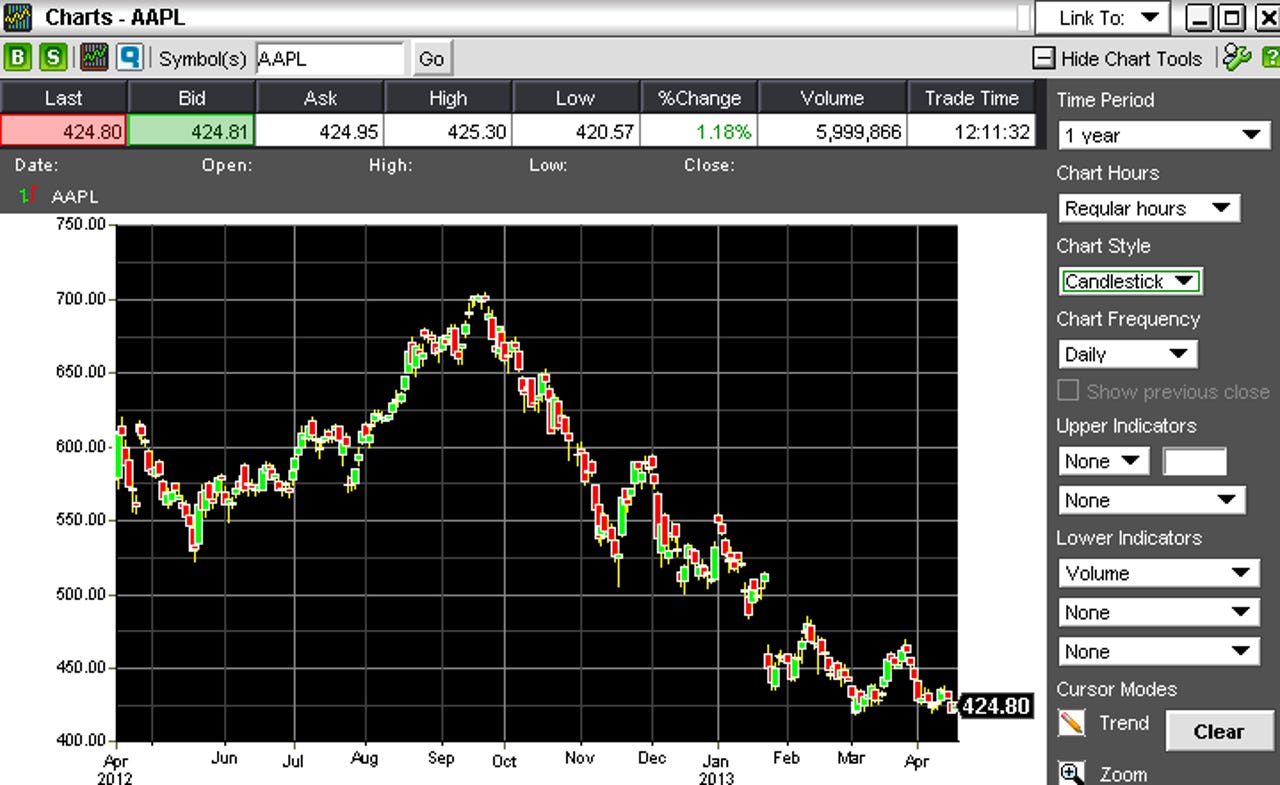Analysts start to sweat Apple's Q2, outlook

Apple's fiscal second quarter results are more than a week away, but analysts are already sweating what is likely to be a softer-than-expected outlook for the third quarter, cannibalization from a cheaper iPhone and the timing of new product launches.
In short, analysts have quickly stopped yapping about $1 trillion market caps and $1,000 stock prices. Wall Street is expecting Apple to report second quarter earnings of $10.10 a share on revenue of $42.59 billion.
On Tuesday, a pair of analysts cut estimates and price targets. The first price target cut came from Gene Munster, an analyst at Piper Jaffray who made his name chronicling Apple's rise.

In a research note, Munster remained upbeat about Apple's prospects, but cut his price target to $688 from $767. Munster walked through the worst case scenarios for Apple, indicated the company's outlook will likely disappoint and stressed that worries about a cheaper iPhone hurting profit margins are manageable. Munster's bottom line: If Apple launches a $300 (unsubsidized) iPhone starting in September to compete globally it will have a 30 percent cannibalization rate. He said:
Factoring In 30% Cannibalization (i.e. for every ~3 cheaper phones sold, 1 full priced phone is cannibalized). We expect Apple to sell a $300 iPhone starting in September. For CY14, we now expect 6% high end iPhone unit growth or 37% share of high end market vs. 43% in CY12. We believe Apple will sell 75m cheaper phones or 11% of the low end (below $400) market vs. 0% in CY12. Given Apple's 42% share of the high end market in CY12, we believe getting 11% share of the low end market in CY14 is achievable.
Munster also expects Apple to project June quarter revenue of about $34 billion to $36 billion. The problem: Wall Street expects $39.6 billion in revenue for the fiscal third quarter. Munster is expecting flattish iPhone growth year over year in June.
Meanwhile, Stiflel Nicolaus analyst Aaron Rakers also cut his revenue estimates for 2013 and 2014 and his price target to $600 from $650. Rakers said he expects a June quarter trough for iPhone demand ahead of an iPhone 5S launch. He also said he expects Apple to ship 17.2 million iPods with the iPad mini representing about 11 million of those units.
Rakers said:
iPhone Shipments Reduced, but Not Terribly Surprising at This Point. For F2Q13 (March) we reduce our iPhone unit shipments to 35.0 million from 38.7 million (0% y/y growth versus 29% y/y growth in F1Q13). We are more cautious about the March quarter as there were fewer new carrier launches of iPhone 5 after the strong acceleration in December. Recall that iPhone 5 began shipping in the U.S. and eight additional countries at launch on September 21 (versus U.S. and seven additional countries for iPhone 4S), followed by a launch in 22 more countries in one week (versus 22 more countries in two weeks) and ramped to a total of over 100 countries within the December quarter (versus 100 countries in four months for iPhone 4S). In addition, we continue to see the competitive momentum building with Samsung’s S4, HTC’s One and Blackberry’s Z10.
Overall, analysts are fretting about Apple because they lack visibility into the company's plans. That approach was fine when Steve Jobs ran Apple, but now the company is a big chunk of everyone's portfolio. In other words, Apple is owned by everyone and that means they want the good times to continue or at least a better use of cash. Barclays analyst Ben Reitzes captured the concerns. He said:
Investors know that Apple is committed to quality products and innovation already – but given its size and importance in investment portfolios – we need more. We believe that the highly secretive Apple is on its way toward becoming more open over the next year – and could start to give a bit more incremental information to investors get a better idea of the company’s direction.
Specifically, Reitzes is betting that Apple will share its long-term goals, position on things like phablets, retail operations and TV strategy. "Going forward we believe that Apple will also need to address how it is dealing with complex production issues. Lastly, we would like to hear more details on its long term plans to expand in the enterprise," said Reitzes.